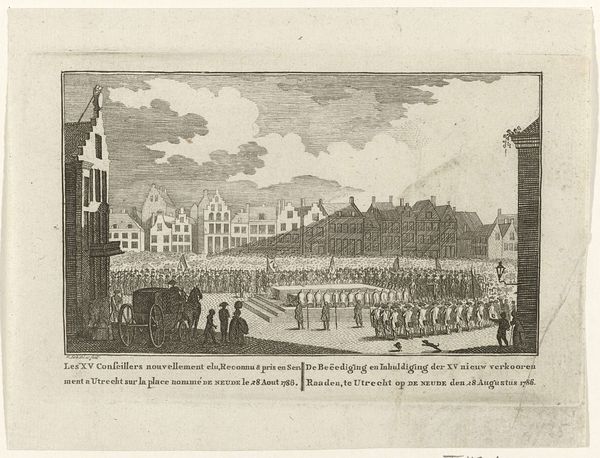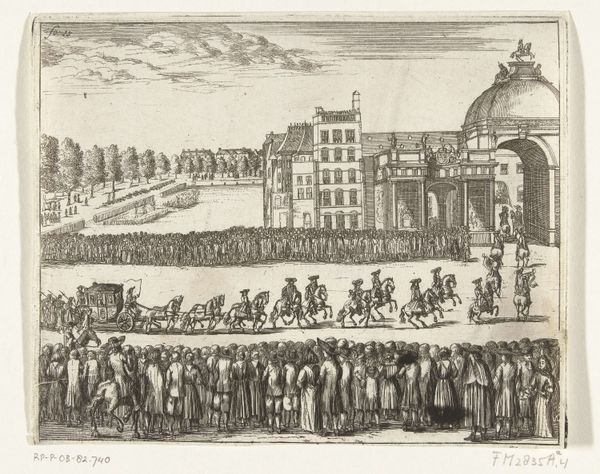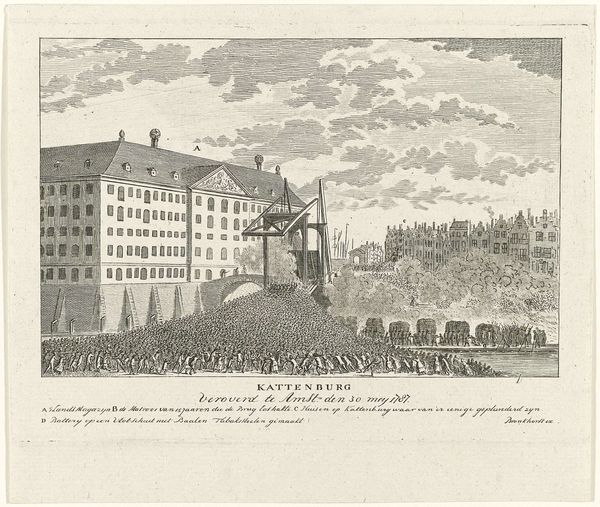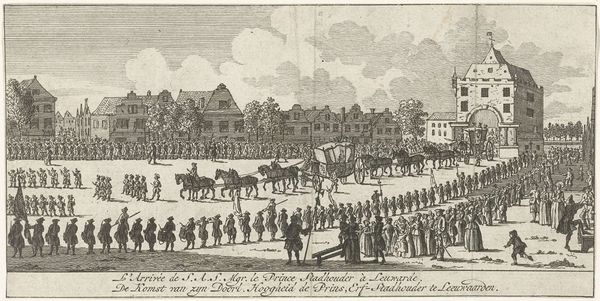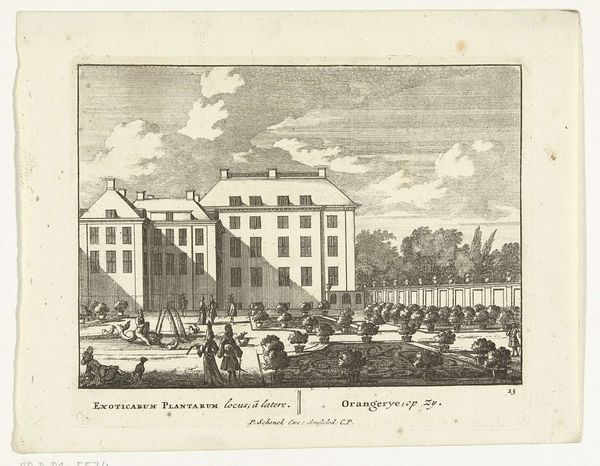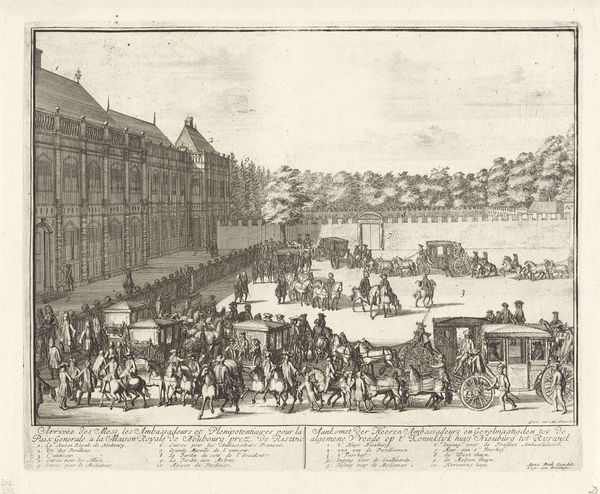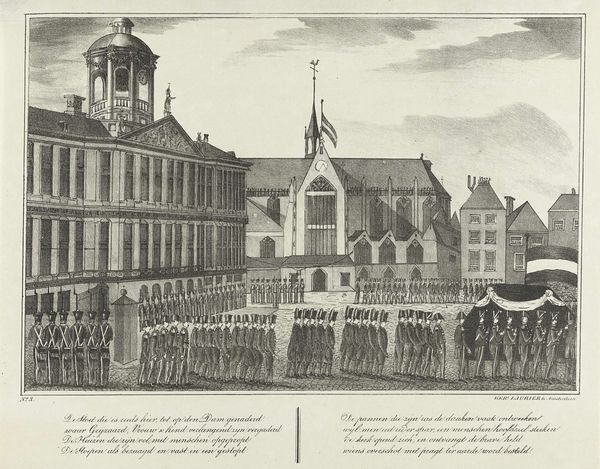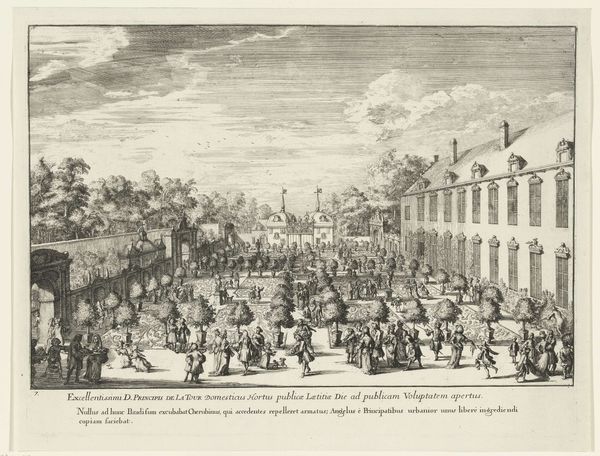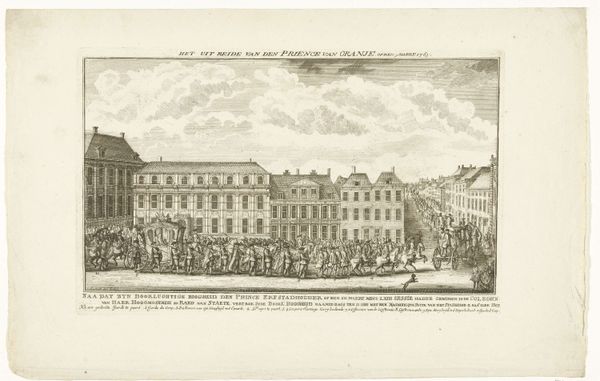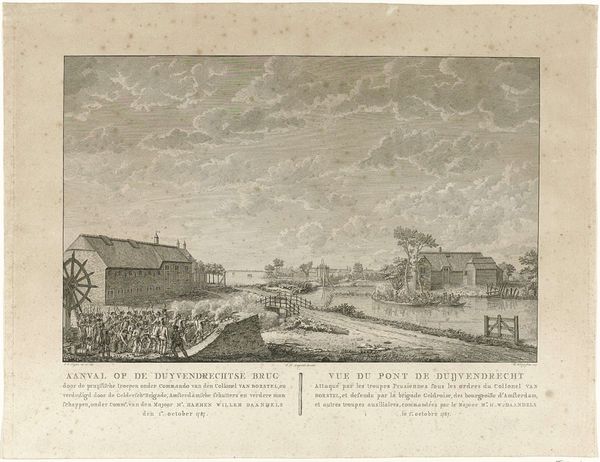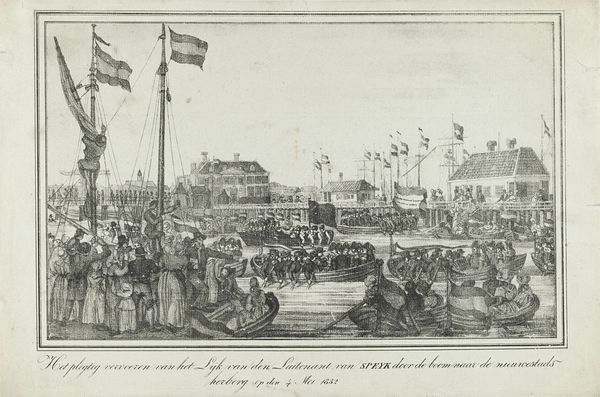
drawing, print, ink, engraving
#
drawing
#
dutch-golden-age
# print
#
landscape
#
ink
#
romanticism
#
cityscape
#
history-painting
#
engraving
Dimensions: height 273 mm, width 366 mm
Copyright: Rijks Museum: Open Domain
This print from 1832, by an anonymous artist, was made using etching, a process involving biting lines into a metal plate with acid, then inking and pressing the plate to create an image. Consider the labor involved in this reproductive technique. The artist captured a somber ceremony, the funeral procession of Jan van Speijk, a Dutch naval hero. The etching process itself is laborious, demanding skilled craftsmanship to transfer the scene onto the metal plate. Each line meticulously etched contributes to the overall narrative, reflecting the precision and care invested in commemorating van Speijk’s sacrifice. The printmaking process enables the wide distribution of this image. The etching is not just a work of art, but a vehicle for disseminating nationalist sentiment. Through mass production, the image becomes a tool for shaping public memory. In examining this etching, it becomes clear that the materials, processes, and social context are essential to understanding its full meaning, blurring the lines between fine art and craft.
Comments
No comments
Be the first to comment and join the conversation on the ultimate creative platform.
